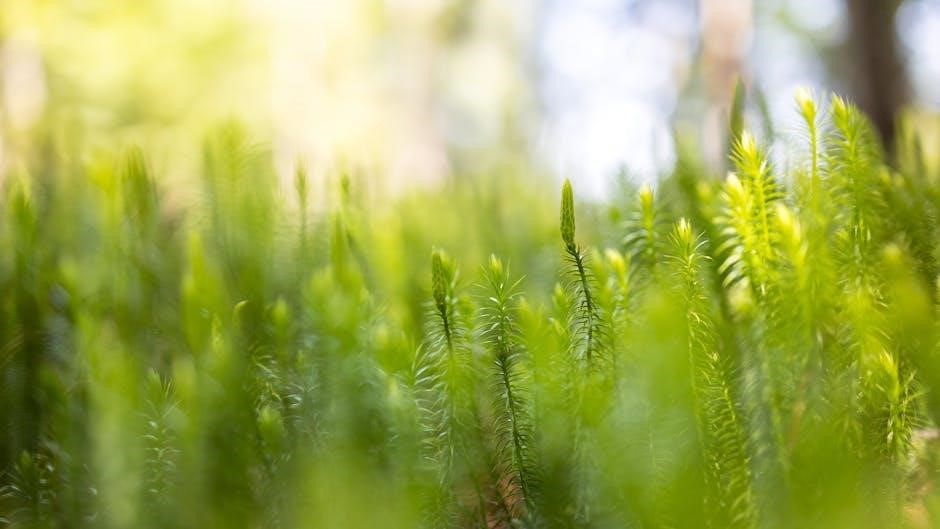Alpine WSG is a water-soluble granule insecticide designed for effective pest control in various indoor and outdoor settings, utilizing Transfer Effect Technology to target pests efficiently.
Overview of Alpine WSG
Alpine WSG is a water-soluble granule insecticide featuring dinotefuran as its active ingredient, known for its rapid action and Transfer Effect Technology. It is highly effective against pests like ants, cockroaches, and flies in both indoor and outdoor settings. The product is versatile, suitable for crack, crevice, and surface applications, making it ideal for residential and commercial use. Its unique formulation ensures quick knockdown and long-lasting control, providing reliable results for pest management professionals and homeowners alike. Alpine WSG is EPA-registered and designed for safe use when applied according to label instructions.

Understanding Alpine WSG
Alpine WSG is a water-soluble granule insecticide with dinotefuran as its active ingredient, offering rapid action and the Transfer Effect Technology for effective pest control in various settings.
Active Ingredient and Transfer Effect Technology
Alpine WSG contains the active ingredient dinotefuran, a fast-acting neonicotinoid that disrupts pest nervous systems, leading to paralysis and death. Its Transfer Effect Technology enables treated pests to transfer the insecticide to others in their colony, enhancing control. This innovative approach targets pests like ants, cockroaches, and stink bugs effectively. The technology promotes colony-wide elimination, making Alpine WSG highly efficient for severe infestations. Its water-soluble granule formulation ensures easy mixing and application in various settings, including indoor and outdoor areas.
Approved Use Sites and Target Pests
Alpine WSG is approved for use in various indoor and outdoor settings, including residential, commercial, and food-handling areas. It targets pests such as ants, German cockroaches, house flies, and Brown Marmorated stink bugs. Outdoor applications include dumpsters, trash containers, and structural components like utility poles and fences. In New York, outdoor use is restricted to crack, crevice, or spot treatments. The product is effective for active infestations and recurring maintenance, providing reliable results across diverse environments and pest scenarios.
Mixing Alpine WSG
Start by filling your sprayer halfway with water, add the Alpine WSG packet, agitate, then top up to 1 gallon. Ensure complete dissolution for effectiveness.
Step-by-Step Mixing Instructions
Clean spray equipment thoroughly before use. Fill the tank halfway with water, add the Alpine WSG packet, and agitate to dissolve completely.
Top up with water to 1 gallon, ensuring the solution is well-mixed for optimal effectiveness.
For different potencies (0.01, 0.02, or 0.03%), adjust the amount of water or packets as needed, with a maximum of 30 grams per gallon.
Start with the lowest concentration (0.01%) for general use, increasing if required for severe infestations. Always follow label guidelines for safe and effective mixing.
Mixing for Different Application Methods
Alpine WSG can be mixed to varying concentrations depending on the application method. For Crack & Crevice treatments, use 10 grams per gallon of water. Surface applications typically require 10-30 grams per gallon, adjusted based on pest severity. Spot treatments use 10 grams per gallon for targeted areas. Always start with the lowest recommended concentration to minimize environmental impact and adjust as needed for effectiveness. Ensure thorough agitation during mixing for uniform distribution of the active ingredient.
Safety Precautions During Mixing
When mixing Alpine WSG, wear protective gear such as gloves, goggles, and a mask to avoid skin and eye contact. Ensure good ventilation to prevent inhaling dust. Avoid eating, drinking, or smoking during mixing. In case of spills, clean immediately with water and mild detergent. If exposed, wash affected areas with soap and water. Keep the product away from food, pets, and water sources. Properly decontaminate equipment after use to prevent residue buildup. Always follow the manufacturer’s guidelines for safe handling and disposal.

Application Instructions
Alpine WSG can be applied indoors and outdoors via crack, crevice, spot, or surface treatments. Begin applications at the start of fly season for optimal results.
Indoor and Outdoor Application Guidelines
Alpine WSG can be applied both indoors and outdoors, targeting pests in various settings. Indoors, focus on areas like kitchens, bathrooms, and cracks near pest activity. Outdoors, treat surfaces around dumpsters, trash containers, and structural components. In New York, outdoor use is restricted to crack, crevice, or spot treatments. Apply using a coarse spray for surfaces or direct application into cracks and crevices for precise control. Always follow local regulations and safety guidelines to ensure effective pest management while minimizing environmental impact.
Crack, Crevice, and Spot Treatment Techniques
For effective pest control, apply Alpine WSG directly into cracks, crevices, and specific spots where pest activity is observed. Use a sprayer like the B&G model, ensuring the applicator tip reaches deep into these areas. Place the tip directly into cracks or crevices for precise application. Spot treatments should target areas with visible pest activity. Always follow local regulations, especially in restricted areas like New York, where outdoor use is limited to these methods. Wear protective gear and avoid application near water sources to ensure safety and environmental protection. Proper timing, such as during fly season, enhances effectiveness.
Timing and Frequency of Applications
Alpine WSG applications should begin at the start of pest season, such as fly season, to maximize effectiveness. Repeat treatments during periods of high pest activity, ensuring optimal control. For severe infestations, increase application frequency but avoid exceeding label recommendations. Reapply every 7–14 days as needed, depending on pest pressure and environmental conditions. Adjust timing based on pest life cycles and seasonal changes. Always adhere to local regulations and label instructions for specific use sites to ensure safe and efficient pest management.
Dosage Rates by Pest Type
Alpine WSG dosages vary by pest: 10 grams per gallon for ants and fleas, 15 grams for flies, and higher rates for severe infestations.
Specific Dosage Recommendations
Alpine WSG dosages are tailored to target pests effectively. For ants and fleas, use 10 grams per gallon of water. For flies, the recommended dose is 15 grams per gallon. Severe infestations may require higher concentrations, up to 30 grams per gallon. Always adjust according to pest type and severity. Follow label instructions for precise measurements to ensure optimal results and safety. Proper dosing is critical for efficacy and environmental safety.
Adjusting Dosage for Severe Infestations
For severe infestations, Alpine WSG dosages can be increased up to 30 grams per gallon, depending on pest type and severity. Start with the standard recommendation, then gradually adjust if needed. Higher concentrations may be necessary for persistent pests like ants or cockroaches. Always follow label instructions to avoid over-application. Ensure safety by consulting a professional if unsure. Proper adjustment balances efficacy and environmental safety, preventing potential risks to non-target organisms.
Safety Precautions and Equipment Setup
Always wear protective gear, including gloves and eyewear, when handling Alpine WSG. Ensure equipment is properly calibrated and follows manufacturer guidelines for safe operation and application.
Equipment Recommendations and Calibration
Use a B&G sprayer or similar equipment for precise application. Ensure the sprayer is properly calibrated and in good working condition. Follow the manufacturer’s guidelines for equipment setup and operating pressures. Before mixing Alpine WSG, thoroughly clean the spray equipment to prevent contamination. For optimal results, start applications at the beginning of fly season and repeat during periods of heavy activity. Always refer to the product label for specific calibration instructions and safety measures to protect non-target organisms, including bees, by adhering to the Bee Hazard Icon guidelines.
Protective Gear and Application Safety
Wear protective clothing, including long sleeves, gloves, safety goggles, and a mask during mixing and application. Avoid skin contact or inhalation of the product. Keep children and pets away from treated areas until the solution is dry. Follow all safety measures outlined on the product label, especially those related to the Bee Hazard Icon, to protect pollinators. Ensure proper ventilation in indoor settings and avoid applying during windy or rainy conditions to prevent drift. Always prioritize safety to minimize risks to humans, pets, and the environment.

Environmental Considerations
Alpine WSG’s active ingredient, dinotefuran, targets pests while minimizing impact on non-target organisms. Prevent drift and runoff to protect aquatic life and follow label instructions to ensure environmental safety.
Impact on Non-Target Organisms
Alpine WSG contains dinotefuran, which targets pests while minimizing effects on non-target species. However, precautions are essential to avoid drift or runoff, as these can harm aquatic life. Follow label instructions to prevent unintended exposure. For bees and pollinators, apply during low activity periods and avoid blooming flowers. Proper application ensures environmental safety while maintaining pest control effectiveness.
Disposal and Storage Guidelines
Store Alpine WSG in its original container, in a cool, dry place, and out of reach of children and pets. Avoid exposure to moisture or heat sources. Dispose of empty containers and unused product according to federal, state, and local regulations. Rinse empty containers thoroughly before disposal. Do not contaminate waterways or sewers. Follow EPA guidelines for proper waste disposal to minimize environmental impact. Ensure all storage areas are secure to prevent pest contamination and unauthorized access.

Troubleshooting Common Issues
Address ineffectiveness by ensuring proper application and mixing techniques. Re-treat as needed for reinfestation. Check equipment for malfunctions and recalibrate if necessary for optimal results.
Addressing Ineffectiveness or Reinfestation
If Alpine WSG is ineffective, ensure proper application and mixing techniques. Reapply as directed, focusing on high-pest areas. For reinfestation, adjust treatment timing and frequency. Check for equipment malfunctions and recalibrate. Verify the correct dosage rate for target pests. Avoid over-dilution, as it reduces efficacy. Direct contact with pests is essential. Re-treat cracks, crevices, and surfaces thoroughly. Consider rotating with other products if necessary. Always follow label instructions for optimal results and to prevent resistance development.
Managing Equipment Malfunctions
If equipment malfunctions during application, stop use immediately to avoid ineffective treatments. Recalibrate or clean the equipment according to the manufacturer’s instructions. Check for clogs, worn nozzles, or improper pressure settings. Ensure the sprayer is clean and in good working condition before mixing Alpine WSG. If issues persist, adjust the dilution ratio or test the equipment on a small area. Replace damaged parts promptly to maintain efficiency and avoid reinfestation. Regular maintenance and proper setup are crucial for effective pest control with Alpine WSG.
Alpine WSG offers effective pest control solutions with its innovative Transfer Effect Technology. Always follow mixing and application guidelines for optimal results and safety.
Final Tips for Effective Alpine WSG Use
For optimal results, always adhere to the mixing and application instructions. Ensure proper equipment setup and calibration before use. Wear recommended protective gear, including gloves and eyewear, to minimize exposure. Apply Alpine WSG during periods of high pest activity for maximum effectiveness. Avoid spraying in windy or rainy conditions to prevent drift and runoff. Regularly inspect and clean equipment to maintain performance. Follow local regulations and environmental guidelines to protect non-target organisms. Store unused product securely and dispose of empty packets according to label instructions.
